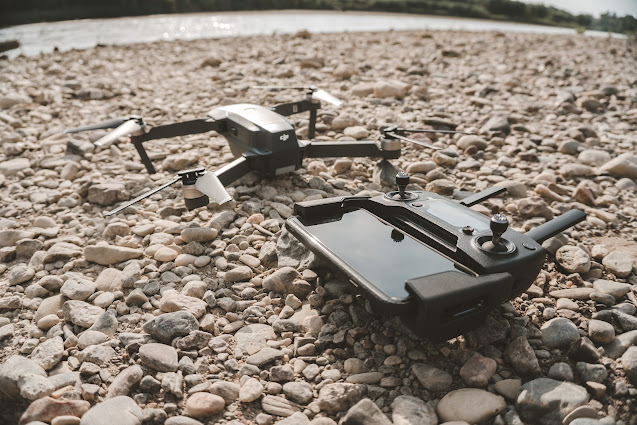Methane Mitigation Strategies: A Closer Look at Drone-Based Solutions
In this blog post, we will take a closer look at drone methane detection for methane mitigation, its advantages, applications, and the promising future they hold in curbing methane emissions.
The Methane Challenge
Methane release comes from various sources. It includes
natural processes like wetlands and human activities such as energy production,
agriculture, and waste management. Addressing these leaks is essential to limit
global warming to safe levels. Traditional methane detection and monitoring
methods involve ground-based equipment and human labour, which can be time-consuming,
expensive, and sometimes hazardous.
Drone Technology Revolutionizes Methane Detection
Drone technology has revolutionized the way we approach
methane detection and mitigation. Equipped with specialized sensors, drones can
efficiently and effectively detect methane leaks in various settings, providing
real-time data for timely intervention. Here's how drone-based solutions are
making a difference:
1.
Enhanced
Efficiency
Drones quickly cover large areas and can access hard-to-reach
locations, such as remote oil and gas infrastructure or agricultural fields,
where methane leaks are common. This efficiency reduces detection time and
minimizes the environmental impact of leaks.
2. Aerial
Surveillance
Drone
methane detection equipped with specialized methane sensors and cameras
can provide aerial surveillance of large areas, such as industrial facilities,
agricultural operations, and natural gas infrastructure. They can swiftly and
efficiently cover extensive ground, identifying methane leaks that might
otherwise go unnoticed.
3. Cost-Effective
While the initial investment in drone technology can be
substantial, the long-term cost savings are significant. Drones reduce labour
costs, decrease downtime during leak detection, and minimize the need for expensive
ground-based equipment.
4.
Safety
Drone-based methane detection reduces the need for personnel
to physically inspect potentially hazardous sites. This significantly improves safety
in industries like oil and gas, where methane leaks can pose significant risks.
5.
Real-Time
Data
Drones equipped with methane sensors provide real-time data
and imagery, enabling immediate action to be taken when a leak is detected.
This rapid response is critical for preventing further emissions and
environmental damage.
Applications of Drone-Based Methane Detection
Let's take a closer look at how
drone-based solutions are making a difference in methane mitigation:
1.
Oil and Gas
Industry
Drones are increasingly used in the oil and gas sector.
Drones can monitor methane release from drilling sites, pipelines, and storage
facilities. Identifying and addressing leaks promptly helps operators reduce
environmental impact and regulatory fines.
2.
Industrial
Leak Detection
In industrial settings, methane leaks can occur in pipelines,
storage tanks, and other equipment. Drones equipped with methane sensors can
fly over these facilities, quickly identifying and pinpointing the source of
leaks. This not only prevents emissions but also enhances safety by reducing
the risk of explosions.
3.
Agricultural
Emissions Monitoring
Agriculture is a significant source of methane emissions. Primarily
from livestock and manure management. Drones equipped with methane sensors can
fly over farms. It provides farmers with valuable data on emissions. This
information allows for more efficient management practices, ultimately reducing
methane output.
4.
Natural Gas
Infrastructure Inspection
The natural gas industry relies heavily on pipelines. These
can transport gas from production sites to consumers. Drones can inspect these
pipelines for leaks and structural integrity. It can ensure that methane
emissions are minimized and safety standards are maintained.
5.
Wildfire
Prevention
Methane emissions can contribute to the ignition and spread
of wildfires. Drones equipped with methane sensors can be used in fire-prone
regions to monitor methane levels and identify potential hotspots, helping to
prevent the outbreak of wildfires.
Challenges and Future Developments
While drone-based methane detection holds great promise,
there are challenges to overcome. One challenge is sensor technology –
improving the sensitivity and accuracy of methane sensors is essential for more
reliable detection. Additionally, regulatory frameworks need to be developed
and updated to ensure the safe and responsible use of drones for methane
detection.
Future Developments
The future of drone-based methane mitigation holds great
promise like the airborne magnetometer. Researchers and engineers are
continually working to enhance the capabilities of methane sensors. It makes
them more sensitive and accurate. Also, the use of Artificial Intelligence (AI)
and machine learning algorithms can help analyze. It can also explain the vast
amount of data collected by drones. It further improves our ability to identify
and address methane emissions.
Conclusion
Drone methane detection is a crucial step in mitigating
methane emissions for environmental preservation. These solutions offer
enhanced efficiency and cost-effectiveness. It also offers safety compared to
traditional methods. With ongoing advancements in sensor technology, regulatory
support, and the integration of AI, the future of drone-based methane detection
looks promising.
Our dedication to environmental sustainability and addressing
the climate change challenges remains paramount. The adoption of drone-based
methane detection technology and airborne magnetometers is expected to have a
real impact on identifying and checking methane release in diverse industries.
This innovative approach holds the potential to truly contribute to our battle
against climate change and the preservation of our planet for the benefit of
future generations.



Comments
Post a Comment